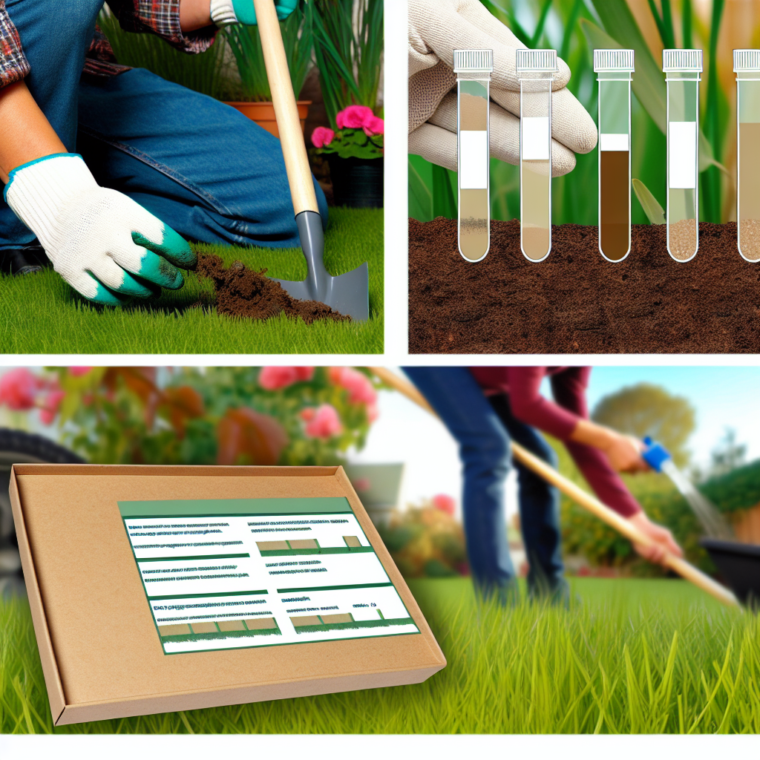How to Test and Improve Your Lawn’s Soil Quality
Maintaining a lush, green lawn is a goal for many homeowners, but achieving this requires more than just regular mowing and watering. The foundation of a healthy lawn lies in the quality of its soil. Testing and improving your lawn’s soil quality can lead to better grass growth, reduced weed problems, and a more resilient lawn. This article will guide you through the process of testing your soil and provide actionable steps to enhance its quality.
Why Soil Quality Matters
Soil quality is crucial because it affects the availability of nutrients, water retention, and the overall health of your lawn. Poor soil can lead to weak grass that is susceptible to diseases and pests. Understanding your soil’s composition allows you to make informed decisions about fertilization, watering, and other lawn care practices.
How to Test Your Lawn’s Soil
Testing your soil is the first step in understanding its current state and identifying areas for improvement. Here’s how you can do it:
- Purchase a Soil Test Kit: Available at garden centers or online, these kits provide a basic analysis of your soil’s pH, nutrient levels, and organic matter content.
- Collect Soil Samples: Use a trowel to collect soil from different areas of your lawn. Mix these samples in a clean container to get a representative sample.
- Follow Kit Instructions: Each kit will have specific instructions on how to test the soil. Typically, you’ll mix soil with a solution and compare the color change to a chart.
- Send Samples to a Lab: For a more detailed analysis, consider sending your samples to a local agricultural extension office or a professional soil testing lab.
Interpreting Soil Test Results
Once you have your soil test results, you’ll need to interpret them to understand what your lawn needs. Key factors to consider include:
- pH Level: Most grasses prefer a pH between 6.0 and 7.0. If your soil is too acidic or alkaline, you may need to add lime or sulfur to adjust it.
- Nutrient Levels: Look for deficiencies in nitrogen, phosphorus, and potassium, which are essential for grass growth. Your test results will guide you on the type and amount of fertilizer needed.
- Organic Matter: A higher percentage of organic matter improves soil structure and nutrient availability. Consider adding compost if your soil lacks organic content.
Improving Your Lawn’s Soil Quality
Based on your soil test results, you can take specific actions to improve your lawn’s soil quality:
- Amend the Soil: Add organic matter such as compost or well-rotted manure to improve soil structure and nutrient content.
- Adjust pH Levels: Use lime to raise pH or sulfur to lower it, following the recommendations from your soil test.
- Fertilize Appropriately: Apply fertilizers based on the nutrient deficiencies identified in your soil test. Use slow-release fertilizers to provide a steady supply of nutrients.
- Aerate the Lawn: Aeration helps improve soil compaction, allowing roots to access air, water, and nutrients more effectively.
Case Study: A Successful Lawn Transformation
Consider the case of a homeowner in Ohio who struggled with a patchy lawn. After conducting a soil test, they discovered a severe nitrogen deficiency and a pH level of 5.5. By applying lime to adjust the pH and using a nitrogen-rich fertilizer, they transformed their lawn into a vibrant, green space within a few months. This example highlights the importance of understanding and addressing soil issues for lawn success.
Conclusion
Testing and improving your lawn’s soil quality is a critical step in achieving a healthy, beautiful lawn. By understanding your soil’s current state and taking targeted actions to address deficiencies, you can create an environment where grass thrives. Regular soil testing and amendments will ensure your lawn remains resilient and attractive for years to come. Remember, a healthy lawn starts from the ground up!


